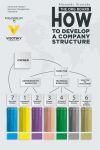
Автор книги: Нина Пусенкова
Жанр: Иностранные языки, Наука и Образование
сообщить о неприемлемом содержимом
Текущая страница: 13 (всего у книги 44 страниц) [доступный отрывок для чтения: 14 страниц]
Lesson 14
Corporate Scandals
Read and translate the text and learn terms from the Essential Vocabulary.
The Fall of Enron
How ex-CEO Jeff Skilling’s strategy grew so complex that even his boss couldn’t get a handle on it
To former Enron CEO Jeffrey Skilling, there were two kinds of people in the world: those who got it and those who didn’t. «It» was Enron’s complex strategy for minting rich profits from a trading and risk-management business built essentially on assets owned by others. Vertically integrated companies like ExxonMobil, whose balance sheet was rich with oil reserves and gas stations, were dinosaurs to a contemptuous Skilling. «In the old days, people worked for the assets,» Skilling stated. «We’ve turned it around – what we’ve said is the assets work for the people.»
But who looks like Tyrannosaurus Rex now? As Enron struggles to salvage something from the nation’s largest bankruptcy case it’s clear that the real Enron was a far cry from the «asset light» market maker that Skilling proclaimed. And the financial maneuvering and off-balance-sheet partnerships that he and ex-CFO Andrew Fastow perfected to remove everything from telecom fiber to water companies from Enron’s debt-heavy balance sheet resulted in the company’s collapse. «Jeff’s theory was assets were bad, intellectual capital was good,» says a former executive. Employees accepted the rhetoric, but they «didn’t understand how it was funded.»
Neither did many others. Bankers, stock analysts, auditors, and Enron’s own board failed to comprehend the risks in this heavily leveraged trading giant. Enron’s bankruptcy filings show $13.1 billion in debt for the parent company and an additional $18.1 billion for affiliates. But that doesn’t include at least $20 billion more estimated to exist off the balance sheet. Kenneth Lay sparked the first wave of panic when he revealed that deals involving partnerships run by his CFO would knock $1.2 billion off shareholder equity. Lay was never able to explain how the partnerships worked or why anyone shouldn’t assume the worst – that they were set up to hide Enron’s problems, inflate earnings, and personally benefit the executives who managed some of them.
That uncertainty ultimately destroyed Enron’s best hope for a rescue: its deal to be acquired by its smaller but healthier competitor, Dynegy Inc. Now Enron is frantically seeking a banking partner to help maintain some shred of its once-mighty trading empire. Already, 4,000 Enron workers in Houston have lost their jobs. And hundreds of creditors are trying to recover part of the billions they’re owed.
From the beginning, Lay had a vision for Enron that went far beyond that of a traditional energy company. Lay formed Enron from the merger of two pipeline companies in 1985. In just 15 years, Enron grew from nowhere to be America’s 7th largest company, employing 21,000 staff in more than 40 countries. Business gurus raved. Enron was hailed as the business model of the future. Fortune magazine named Enron the nation’s most innovative company 5 years running and, a year before Skilling’s resignation, ranked Enron among its «10 Stocks to Last the Decade». «It was a child of deregulation, of rapid technological change, of very high innovation in business practices and processes, and of a culture that sought to rewrite the rules of competition and business management,» said Robert Bruner, professor of Darden School of Business.
Lay understood that deregulation of the energy business would offer vast new opportunities. To exploit them, he turned to Skilling, then a McKinsey consultant. Skilling was the architect of an increasingly complex financial structure. After he quit in August and CFO Fastow was fired Oct. 24, there was no one left to explain it.
Much of the blame for Enron’s collapse has focused on the partnerships, but the seeds of its destruction were planted well before the October surprises. Enron was already on shaky financial ground from a number of bad investments, including overseas projects ranging from a water business in England to a power distributor in Brazil. «You make enough billion-dollar mistakes, and they add up,» says one source. In June, Standard & Poor’s put the company on notice that its underperforming international assets were of growing concern. But S&P ultimately reaffirmed the credit ratings, based on Enron’s apparent willingness to sell assets and take other steps.
Behind all the analyses of Enron was the assumption that the core energy business was thriving. It was still growing rapidly, but margins were coming down as the market matured. Skilling’s answer to growing competition in energy trading was to push Enron’s innovative techniques into new arenas, everything from broadband to metals, steel, and even advertising time and space. Skilling knew he had to find a clever way to finance his big growth plans and manage the international problems without killing the company’s critical investment-grade credit rating.
«He’s heartbroken.» No one ever disputed that Skilling was clever. He took over as production director at a startup Aurora (III.) TV station at age 13 when an older staffer quit and he was the only one who knew how to operate the equipment. Skilling received a scholarship to university in Dallas. After graduation, he went to work for a Houston bank. The bank later went bust while Skilling was at Harvard Business School. Skilling said that fiasco made him determined to keep strict risk controls on Enron’s trading business. His brother Tom, a Chicago TV weatherman, says of him: «He’s heartbroken over what’s going on there… We were not raised to look on these kinds of things absent emotion.»
Enron’s «intellectual capital» was Skilling’s pride and joy. He recruited more than 250 new MBAs each year from the top business schools. Meteorologists and PhDs in math and economics helped analyze and model the vast amounts of data that Enron used in its trading operations. A forced ranking system weeded out the poor performers. «It was as competitive internally as it was externally,» says one former executive.
It was no surprise then that Skilling would turn to a young finance wizard, Fastow, to help him raise capital for his rapidly expanding empire. Fastow was recruited to Enron in 1990 from Continental Bank. Articulate, handsome, and mature beyond his years, he became Enron’s CFO at age 36. In 1999, he earned CFO Magazine’s CFO Excellence Award. Skilling told the magazine: «We didn’t want someone stuck in the past, since the industry of yesterday is no longer. Andy has the intelligence and the youthful exuberance to think in new ways.»
But Skilling’s fondness for Fastow was not widely shared. Many colleagues considered him a difficult man, prone to attacking those he didn’t like in Enron’s group performance reviews. When he formed and took a personal stake in the LJM partnerships that blew up in October, the conflict of interest inherent in those deals only added to his colleagues’ distaste for him. Enron admits Fastow earned more than $30 million from the partnerships. The Enron CFO wasn’t any more popular on Wall Street, where investment bankers bristled at the finance group’s «we’re smarter than you guys» attitude. Indeed, that came back to haunt Enron when it needed capital commitments to stem the liquidity crisis. «It’s the sort of organization about which people said, `Screw them. We don’t really owe them anything,»’ says one investment banker.
While LJM shocked many, the deal was just the latest version of a financing strategy that Skilling and Fastow had used many times since the mid-’90s to fund investments with private equity while keeping assets and debt off the balance sheet. «They were put together with good intentions to offset some risk,» says S&P analyst Ron Barone. «It’s conceivable that it got away from them.»
Did it ever. The off-balance-sheet structures grew increasingly complex and risky. Some, with names like Osprey, Whitewing, and Marlin, were revealed in Enron’s financial filings and even rated by the big credit-rating agencies. But almost no one seemed to have a clear picture of Enron’s total debt, what might hasten repayment, or how some of the deals could dilute shareholder equity. «No one ever sat down and added up how many liabilities would come due if this company got downgraded,» says one lender. Many investors were unaware of provisions in some deals that could dump the debts back on Enron. At the same time, the value of the assets in many of these partnerships was dropping, making it even harder for Enron to cover the debt.
In theory, Enron had mechanisms in place to assess risk and accurately report financial numbers. Enron’s external auditor was the once-venerable Arthur Andersen, dubbed the «Marine Corps of accounting» for the hard-nosed attention to accounting standards it once exemplified. Enron required that deals be rigorously analysed, a process that often included review by the legal department of the originating unit, the corporate legal department, the chief risk officer and chief accounting officer.
However, the system of checks and balances in Enron was easily overridden. Deal originators could determine the total value of their proposals by manipulating the long-term price for whatever was being bought or sold. Their bonuses were based on the total value of the deal, not the cash it brought in. All this was designed to boost the quarterly reports, made possible by «mark-to-market» accounting, a system Skilling pushed Enron to adopt in 1991 that allows a company to report as current revenue the total value of a deal over its projected lifetime. Mark-to-market in Enron made earnings look good, pumping up the stock price and increasing the value of stock options executives received as compensation. «It was a moral hazard being able to record your profits immediately,» one former executive said. «It created many temptations.»
High hopes. Skilling was determined not to scale back his grandiose broadband trading dreams or the resulting price-to-earnings multiple of almost 60 that they helped create for Enron’s stock. At its peak in August, 2000, about a third of the stock’s $90 price was attributable to expectations for growth of broadband trading.
That rapidly rising stock price – up 55% in ‘99 and 87% in 2000 – gave Skilling and Fastow a hot currency for luring investors into their off-balance-sheet deals. They quickly became dependent on such deals to finance their expansion efforts. Trouble is, Enron’s stock came tumbling back to earth when market valuations fell in 2001. Its far-flung operational troubles were taking their own toll. In its broadband business, for instance, overcapacity and drop of share prices made it hard to find creditworthy parties for trading. And after spending some $1.2 billion to build and operate a fiber-optic network, Enron found itself with an asset whose value was rapidly deteriorating.
«Something to prove.» And the international problems weren’t going away. Enron’s 65% stake in the $3 billion Dabhol power plant in India was mired in a dispute with its largest customer, which refused to pay for electricity. Some Indian politicians have despised the deal for years, claiming that cunning and even corrupt Enron executives cut a deal that charged India too much for its power.
Enron’s ill-fated 1998 investment in the water-services business was another drag on earnings. Many saw the purchase of Wessex Water in England as a «consolation prize» for Rebecca Mark, Enron executive who had negotiated the Dabhol deal. The Wessex deal formed the core of Azurix Corp., to be run by Mark. But British regulators reduced the rates the utility could charge. Meanwhile, Mark acquired more high-priced water assets. «Once (Skilling) put her there, he let her go wild,» says a former executive. «And she’s going to go wild because she has something to prove.»
But if Azurix was a prime example of Enron’s investment strategy, it also demonstrated how the company tried to disguise its problems with financial alchemy. To set up the company, Enron formed a partnership called the Atlantic Water Trust, in which it held a 50% stake. That kept Wessex off Enron’s balance sheet. Enron’s partner in the joint venture was Marlin Water Trust, which consisted of institutional investors. To attract them, Enron promised to back up the debt with its own stock if necessary. But if Enron’s credit rating fell below investment grade and the stock fell below a certain point, Enron could be responsible for the partnership’s $915 million in debt.
Some partnerships had been questioned by an executive, Sherron Watkins, the whistle-blower of the scandal. She voiced her alarm in a letter to Lay saying, «I am incredibly nervous that we will implode in a wave of accounting scandals.»
The end for Enron came when its murky finances frightened off investors and Dynegy. Dynegy’s bankers spent hours studying a supposedly final draft of Enron’s about-to-be-released report – only to discover two pages of damning new numbers when the quarterly statement was made publicly available. Debt coming due in the fourth quarter increased from under $1 billion to $2.8 billion. Even worse, cash on hand shrunk from $3 billion to $1.2 billion. Dynegy «had a two-hour meeting with the new treasurer of Enron, who had been in that seat for two weeks,» said a source close to the deal. «He had no clue where the numbers came from.»
Respect for assets. On Dec. 5, a suit was filed against Fastow, Skilling, and 27 other Enron executives. They were charged with illegally making more than $1 billion off stock sales before Enron collapsed.
Would the cash squeeze have caught up to Enron, even without Skilling’s and Fastow’s fancy financing? Credit analysts argue that the debt would have been manageable without the crisis of confidence that dried up Enron’s trading business and access to the capital markets. But even they have a new respect for old-fashioned, high-quality assets. «When things get really tough, hard assets are the kind you can depend upon,» says S&P’s Shipman. That’s something Enron’s whiz-kid financiers failed to appreciate.
Source: Business Week (online), December 17, 2001 (abridged)
Essential Vocabulary
1. vertically integrated companies – вертикально-интегрированные компании
2. market maker – «делатель рынка»: участник финансового рынка, который постоянно котирует цены покупателя и продавца и вступает по ним в сделки по финансовым инструментам за свой счет или за счет своих клиентов
3. off-balance-sheet – забалансовый
4. stock analyst – аналитик акций
5. affiliate n – аффилированная компания
6. shareholder equity (SE) – ценность компании для акционеров: все активы минус все обязательства компании
7. uncertainty n – неопределенность
uncertain a – неопределенный
8. resignation n – уход в отставку, отставка
resign v – отказываться от должности, слагать обязанности, уходить в отставку
9. deregulation n – дерегулирование: уменьшение государственного регулирования кредитной системы, финансовых рынков для поощрения действия рыночных сил и повышения эффективности экономики
10. overseas a – заграничный, иностранный
11. Standard & Poor’s (S&P) – Стэндард энд Пурс (США): ведущая фирма по финансовому консультированию и установлению кредитного рейтинга ценных бумаг
12. credit rating – кредитный рейтинг
13. investment-grade credit rating – кредитный рейтинг инвестиционного уровня
14. start-up n – создание новой компании; вновь созданная компания; время, необходимое для начала производства и доведения до оптимального уровня после заключения контракта
start up v – создавать новую компанию
startup a – только что созданный
15. scholarship n – стипендия
16. rank n – ряд, порядок; звание, чин, должность, ранг
ranking n – расположение, расстановка, ранжирование
17. debt n – долг, долговые инструменты
debtor n – должник
18. repayment n – выплата, возврат, погашение
repay v – выплачивать, возвращать, погашать
19. dilution n – разбавление, разводнение (капитала)
dilute v – разбавлять, разводнять
20. liability n – обязательство, задолженность, пассив
21. downgrade v – присвоить более низкий рейтинг, понижать
22.lender n – кредитор, заимодавец
lend v – одалживать, давать взаймы
23. provision n – снабжение, обеспечение; резерв, запас; положение, условие
24. checks and balances – система сдержек и противовесов
25. originator n – инициатор операций; инвестиционный банк, работающий с потенциальным эмитентом с самой ранней стадии планирования займа
26. mark-to-market – ежедневная переоценка биржевых позиций для учета изменения цен, переоценка портфеля ценных бумаг на основе текущих цен; ежедневная переоценка чистых активов
27. price-to-earnings (P/E) – отношение цены акции к прибыли
28. multiple n – множитель, коэффициент
29. peak n – пик, максимум
peak v – достичь пика, максимума
30. creditworthiness n – кредитоспособность
creditworthy a – кредитоспособный
31. utility n – польза, экономическая выгода; коммунальное предприятие
32. joint venture (JV) – совместное предприятие
33. whistle-blower – лицо, поднявшее тревогу при обнаружении злоупотребления
34. quarter (Q) n – квартал
quarterly a – квартальный
35. treasury n – казначейство, казначейский департамент
treasurer n – казначей
36. file a suit – подать иск
Exercise 1. Answer the following questions.
1. What was Enron’s attitude towards tangible assets? 2. For what purpose were Enron’s partnerships set up? 3. How was Enron established and how did it evolve over 15 years? 4. How did professionals initially perceive Enron? 5. Why was Enron having financial problems? 6. What did Enron do to counteract the growing competition in energy trading? 7. What was the financial strategy that Enron employed? 8. How did its CFO contribute to Enron’s collapse? 9. What kind of problems did Enron have with its international projects? 10. What were the key strategic mistakes that Enron made?
Exercise 2*. Find terms in the text that match definitions given below and make sentences of your own with each term.
1. insolvent debtor
2. a person appointed and authorized to examine books of account
3. a rival for sales of the same or similar merchandise
4. the legal combination of corporations in which their assets are transferred to the resulting successor corporation
5. the aid or award given to a student by a fund, school, or institution, on the basis of his merit or need
6. the act of pledging, obligating, or engaging oneself
7. to equalize or counterbalance; to compensate
8. a process instituted in a court of justice for the enforcement or protection of a right or claim
9. the innermost or the most essential part of anything
10. accumulation of stores or materials beforehand; a stipulation
Exercise 3. Name Enron’s stakeholders and describe how they were affected by its collapse.
Exercise 4. Write speeches for the prosecutor and counsel for defense that they could used during the Enron trial.
Exercise 5*. Fill in the blanks using terms given below.
The Pride and the Fall of Enron
While Enron grew rapidly through the 1990s, some of the worst manifestations of its culture – obsessions with……… the stock price and exotic accounting – were also growing. Though the corporation’s character flaws can be traced to its earliest days, they flourished under top executive Jeff Skilling. He didn’t act in a vacuum. Enron had a distracted, hands-off chairman, a compliant…… of directors and an impotent……. of accountants, auditors and lawyers. But it was Skilling’s relentless push for creativity and……… that fostered a growth-at-any-cost culture, drowning out voices of caution and overriding all……….
The creative aggressiveness Skilling deemed essential to dominating new markets went untempered by good business sense or……. discipline. The same……. lauded as key to the company’s future were also key to its collapse. «It was all about taking……. now and worrying about the details later,» said one former Enron deal maker. «The Enron system was just ripe for………»
A key component of Enron’s culture was…… a certain kind of person. In the late 1990s, the…….. department began giving…….. a new set of «cheat sheets» on what to look for in……. candidates. «It was not your typical, hard-working, extracurricular-activities type of student. It was a sharp-dressing extrovert, someone who would fit in as a ruthless trader. We weren’t looking for softies.»
Drawn from Harvard, Yale, Princeton, Rice, and other leading universities, the new hires were smart, even brilliant, but did not prove to be good…… «If you keep telling people how smart they are, after awhile they start to think they have nothing else they need to learn,» said one former manager, «It was such a high-achievement…….. that there wasn’t close……. to make sure people learned the……. of good management.»
To…….. his particular………, Skilling encouraged all…… to use an………. process. That process – «rank and yank,» as it came to be called – came to epitomize the company culture. Employees spent about two weeks annually……. fellow employees’ value to the company, from 1 down to 5. The process could be brutal, and often led to employees……… their peers to make themselves look better. And each……. was forced to rank a fifth of the employees as 5s.
«We hired the best and brightest people, but now they were telling us we had to arbitrarily…….. 20% of them. Why would we want to do that?» a manager said. «Every company in America uses some sort of…….. system, but the way it was used at Enron was just too divisive.»
The cultural changes in the company even threatened the very language that defined the company’s……..: respect, integrity, communication and excellence. In the late 1990s, the company’s Visions and Values…….. considered expressing the principles with words such as «smart,» «bold» and «aggressive». The effort……., but it spoke volumes about what was happening at Enron. Smart, bold and aggressive people tend to get impatient with……. The relentless……… to create new ways to make money – or appear to make money – spawned an environment where raising questions about a……. was considered disloyal or, worse, an indication someone «didn’t get it».
Some observers believe Skilling’s style was a product of his……… with McKinsey. «Rank and yank» was a variation on a system developed by McKinsey. The «asset light» mantra that Skilling preached – of a company that owned few hard assets and made all its money off……. and services – was also a McKinsey-…….. concept. But like many……… firms, McKinsey has gained a reputation as a flock of thinkers, not doers.
Skilling’s background was reflected in his……. approach to details. The McKinsey influence can also be seen in his belief that Enron could adapt the…….. it developed in creating energy trading markets to such disparate products as Internet bandwidth, paper products and even weather. The belief was so strong that it wasn’t felt necessary to hire……… with telecommunications…….. to build its broadband business. Instead, it simply gave the job to successful gas traders.
«These were people that didn’t know how to spell `broadband’, never mind…… that business,» said a former senior vice president. «But if you questioned them and the wisdom of the business, you would be ridiculed because you `didn’t get it’. «And when a business did fail or a deal fell apart, more effort was put into hiding the consequences than owning up to the problem. Debt and losses were anathema to Enron’s…………
Source: Tom Fowler, Houston Chronicle, Oct. 20, 2002 (excerpts)
Terms.
consulting, employee-evaluation, rating, hands-off, recruiters, profits, vision, trading, job, financial statements, ranking, human resources, experience, environment, bonuses, values, board, checks and balances, executives, staff, competitiveness, fiscal, decisions, corruption, hiring, managers, monitoring, enforce, units, downgrading, division, fire, Task Force, rules, demand, deal, endorsed, skills, run, failed, background, basics
Exercise 6. Translate into English.
Как это делалось
Финансовое благополучие «Энрона» пошатнулось после нескольких неудачных сделок. В таких обстоятельствах руководство фирмы, как правило, предпринимает экстренные меры: избавляется от второстепенных и убыточных проектов, консолидирует ресурсы и приглашает на работу специалистов по управлению кризисными ситуациями.
Руководство «Энрона» пошло другим путем. Оно придумало и реализовало хитроумные схемы искажения отчетности и сокрытия астрономических долгов. Менеджеры компании учредили ряд фирм, в основном в офшорных зонах, с которыми «Энрон» вступил в партнерские отношения, образовав товарищества с ограниченной ответственностью. Фирмы-товарищи стали скупать неликвидные активы «Энрона». Вместе с активами, которые правильнее назвать пассивами, из баланса «Энрона» исключались его долги. С «Энроном» эти псевдопартнеры расплачивались акциями самого «Энрона», полученными от «Энрона» же в качестве его доли уставного капитала и показанными в отчетах компании как активы. На одних только Каймановых островах энроновцы учредили более 700 подставных (dummy) фирм, а по всему миру – более трех тысяч. Через офшорные счета перетекали в компанию не облагаемые налогами деньги инвесторов. В лексиконе Уолл-стрит такая махинация называется «схема Понци» – по имени мошенника Чарльза Понци, построившего в 20-е годы прошлого века первую американскую финансовую пирамиду.
Однако было бы полбеды, если бы компания всего лишь скрывала таким образом свои трудности. Осознав, что компания идет ко дну, ее руководители стали сбрасывать свои пакеты акций, покуда они не упали в цене. Естественно, акционеры, не осведомленные об истинном положении дел, их примеру не следовали и, напротив, охотно покупали акции «Энрона», которые превратились в бумагу. Эти действия называются использованием инсайдерской информации в целях личного обогащения и караются по американским законам в уголовном порядке.
Одни только пенсионные фонды Америки потеряли на своих инвестициях в «Энрон» полтора миллиарда долларов. Сгорели пенсии государственных служащих, учителей, полицейских и пожарных.
Трюки такого масштаба, само собой разумеется, невозможны без сговора с аудиторами. Они и сговорились. После того как власти призвали к ответу обслуживавшую «Энрон» компанию «Артур Андерсен» – одну из пяти крупнейших аудиторских фирм США, – она уволила главу своего хьюстонского офиса Дэвида Данкена, отвечавшего за аудит корпорации-банкрота. У «Андерсена» затребовали документацию, касающуюся «Энрона». В ответ «Андерсен» сообщил, что, к великому сожалению, значительная часть документов как в бумажном, так и в электронном виде уничтожена по распоряжению Данкена.
Источник: Еженедельный журнал, 1.2.2002
Правообладателям!
Данное произведение размещено по согласованию с ООО "ЛитРес" (20% исходного текста). Если размещение книги нарушает чьи-либо права, то сообщите об этом.Читателям!
Оплатили, но не знаете что делать дальше?








































